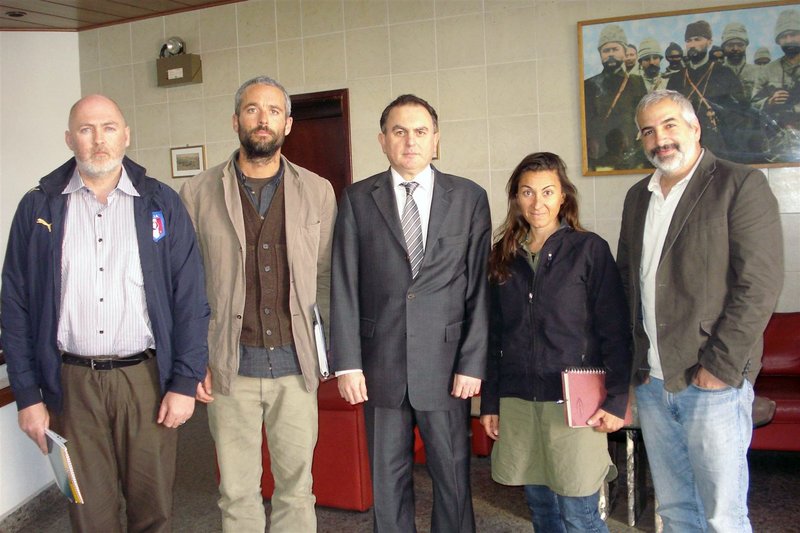– The Associated Press
NEW YORK – A team of New York Times journalists said in a story published on the newspaper’s website Tuesday that Libyan soldiers physically abused them and threatened to kill them during the six days they were held in captivity.
The journalists said they were captured when their driver mistakenly drove into a checkpoint manned by Libyan forces on March 15.
The journalists – reporter Anthony Shadid, videographer Stephen Farrell and photographers Lynsey Addario and Tyler Hicks – say soldiers tied them up with wire, an electrical cord, a scarf and shoelaces and hit them with fists and rifle butts.
“All of us had had close calls over the years,” they wrote in the nearly 2,700-word story about their capture while recounting their previous near-fatal encounters in combat zones. “At that moment, though, none of us thought we were going to live.”
They say a soldier said, “Shoot them.”
Addario was punched in the face and groped, they say, and one soldier stroked her head and told her she was going to die.
“You might die tonight,” they quoted the soldier as saying to her. “Maybe, maybe not.”
The journalists wondered whether a body Addario saw in their car was that of their driver, who’s still missing.
“We still don’t know whether that was Mohammed. We fear it was, though his body has yet to be found,” they wrote. “If he died, we will have to bear the burden for the rest of our lives that an innocent man died because of us, because of wrong choices that we made, for an article that was never worth dying for.”
The journalists were captured during fighting in the eastern part of Libya, where rebel forces are trying to end the four-decade rule of leader Moammar Gadhafi.
Gadhafi on Tuesday made his first public appearance in a week, promising supporters at his residential compound in Tripoli, “In the short term, we’ll beat them. In the long term, we’ll beat them.”
A no-fly zone has been put in place over the North African nation, and international coalition forces have pounded Libyan military targets with missiles.
The Times said Libyan soldiers had threatened to decapitate Hicks. Hicks said the soldiers temporarily put handcuffs on Shadid so tightly that he lost feeling in his hands.
The journalists said that after they were delivered into the custody of military intelligence, an official promised their harsh treatment would end and it did. For the last four days of their captivity, they said, they “fought boredom more than anything else” as they waited to find out their fates.
“After the no-fly zone was imposed and we heard volleys of anti-aircraft fire, we thought that a desperate government could make us human shields,” they wrote.
Gadhafi’s son had confirmed to an ABC News reporter that the journalists were in custody. Libyan forces flew them to Tripoli on Thursday.
The Libyan government initially demanded that a U.S. diplomat go to Tripoli to retrieve them, but the U.S. government refused because it had already closed its embassy.
The Libyans allowed the Turkish Embassy to act as an intermediary, the newspaper said. The journalists were released on Monday and taken to Tunisia.
According to the Committee to Protect Journalists, an advocacy group, 13 journalists are missing or are in government custody. The missing include four from Al-Jazeera. Six Libyan journalists also are unaccounted for, the group said.
The Committee to Project Journalists says it has confirmed more than 50 attacks or attempts to silence the press since Libya’s unrest began in February.
Copy the Story LinkSend questions/comments to the editors.



Success. Please wait for the page to reload. If the page does not reload within 5 seconds, please refresh the page.
Enter your email and password to access comments.
Hi, to comment on stories you must . This profile is in addition to your subscription and website login.
Already have a commenting profile? .
Invalid username/password.
Please check your email to confirm and complete your registration.
Only subscribers are eligible to post comments. Please subscribe or login first for digital access. Here’s why.
Use the form below to reset your password. When you've submitted your account email, we will send an email with a reset code.